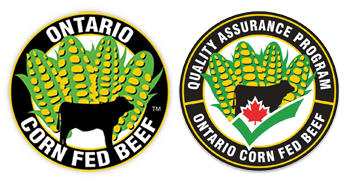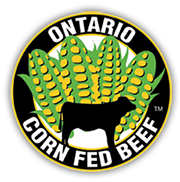Introduction
Waterloo Wellington Beef Tour 2024 , held on June 21, 2024, was another great success again this year.
Hope you enjoy the drone tours and information outline on each of our host farms
Special Thanks to Jacob Mulligan for doing the drone footage and editing along with Christoph Wand for adding the narrative text.
The tour venues were held in the Mount Forest, Holstein and Ayton areas , with the supper held at the Mt. Forest Sports Complex…..overall a great day for everyone involved
Another large turnout began the afternoon touring three area feedlots which incorporated various barn designs, ventilation types, handling facilities, manure handling and storages, feed ingredient storages and specific management strategies within their operations.
Lots of keen interest from tour participants led to numerous discussions with the tour hosts.
Events such as these tours, are always educational and they offer lots of ideas which fellow producers can take home and apply to their own operations
We thank the producers hosting the tours, for their time and effort put forth into preparing to have a group of people visit their farm operations.
Our many sponsors had the opportunity to take part in the tours to network and discuss opportunities with producers ..a great way to engage in conversations
The steak supper was excellent once again, and received rave reviews……Quality, Ontario grown beef at its finest !!
St. Helens Meat Packers were the source of the Ontario Corn Fed Beef striploins for the evening, John Baker from Ontario Corn Fed Beef, carved the whole striploins into steaks, Jones Feed Mill Beef Team helped sear the striploins and hot dogs and kept the meat coming to the food lines, while Gerry Wideman, Triple G Livestock smoked the striploins and seared them as well…..great work everyone !!
The organizing committee of Jared and Amy Frey, Glen and Carolyn Martin and Elam and Fern Bauman, along with numerous helpers did a fantastic job of preparing and serving the meal sides to everyone …well done !!
The speaker program for the evening entailed Elam Bauman acting as Emcee for the evening .
Elam welcomed everyone, thanked our generous sponsors of the WWBT event for their continued support of the producers and Ontario’s beef industry…..very much appreciated !!
Please be sure to review the Sponsor list of all our industry partners involved in the WWBT 2024….Thanks so much for your support !
Brent Cavell , Ontario Corn Fed Beef (OCFB) gave a presentation on behalf of John Baker , Director Brand Management and Business Development highlighting the export activities of OCFB.
The export market represents approximately 40% of the carcass value of each animal. Export markets establish higher values for many cuts not utilized in Canada. Provincial packers benefit from increased values through local ethnic markets. Exciting new additions to the OCFB partner chain, Lone Star Texas Grill – a 23 outlet restaurant chain partner in Ontario, New Distributor partner in Vietnam and a New Distributor partner in Saudi Arabia….lots of great progress happening.
Christoph Wand, Ontario Ministry of Agriculture, Food and Rural Affairs (OMAFRA) spoke of their collaborative involvement with OCFB , to educate and have discussions with producers around the theme of “Cattle and Crops” This includes various tillage practices, crop rotational strategies, cover crops, manure management and 4Rs of Nutrient Stewardship. This concept leads to the balance between producer, industry and government goals to improve farm economics, crop productivity and fertilizer efficiency.
Brent Cavell , OCFB, spoke on the Benchmarking Study he is determined to bring to fruition for the feedlot sector of Ontario’s beef industry. Combining the financial and performance measurable attributes of managing an Ontario feedlot is essential in these turbulent times. With record feeder cattle and fed cattle market values currently, this places producers in need of developing a risk mitigation plan for their farm and family. To do this, producers need to know their operating costs and use a benchmarking template to identify the variable factors within their operation against industry or peer standards. This will demonstrate how they can manage to improve any weaker areas on their farms.
We are price takers at both the front end and the back end of the market, so the on-farm day to day operations are what producers have the ability to control….creating the need to know fundamentals to make accurate management decisions. Remember “If you don’t measure it …..you can’t manage it” !
There is a steering committee formed and we are working towards developing a template that can be used in conjunction with the beef industry and your accountant to create data that is relevant to each operation for management purposes…looking forward to bringing that to the producers !
Steve Duff, OMAFRA Chief Economist walked us through a market update, including cattle markets and grain markets with historical and projections data reviews.
He voiced his thoughts on rebuilding the herd with heifer retention, when it will start and how quickly it will happen….all topics of great concern to the producers.
A number of people in attendance are not exposed to this type of information on a regular basis, meaning Steves’ presentation always garners the crowds attention.
Overall, the Waterloo Wellington Beef Tour 2024 was a great success and we hope to see you at the 2025 Tour next summer!

